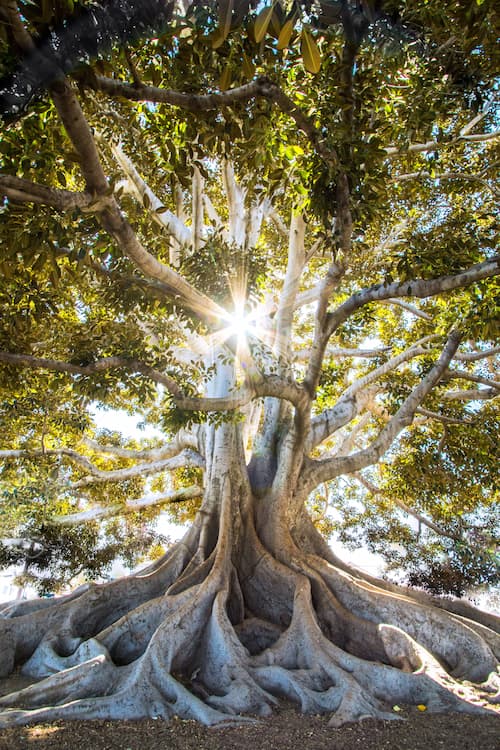The Heart of the Tree
The Heart of the Tree is a poem written by the American writer Henry Cuyler Bunner. All you need to know and learn about this chapter is given below.

Share Options
Summary of the Poem
The Heart of the Tree is a poem in which Henry Cuyler Bunner narrates the importance of trees and his love for nature. He uses this poem to outline the favors trees do for the human kind and their importance in the world’s sustenance. It is a poem that is extremely relevant to today’s world.
What does he plant who plants a tree?
He plants a friend of sun and sky;
In the first stanza he describes the benefits and relation of the tree with the entire cosmos. He addresses this through a repeated rhetorical question; What does he plant who plants a tree?. He answers this question by stating the benefits and the various roles played by the tree.
The tree is a friend to the sun and sky. This is because it depends on the sun for photosynthesis. It grows tall and reaches closer to the sky therefore, the poet calls it the friend to the sky. The tree also helps the breeze in its movements. He also considers the tree to be the flag of beauty that towers up the sky. The tree is home for a lot of animals and birds, making it a perfect heaven for them. It is the perfect harmony of heaven on earth according to the poet. The happy songs sung by the bird mother spreads harmony and melody into the world. The poet is trying to communicate the relevance and the multiple roles a tree plays in the environment through the first stanza.
The shaft of beauty, towering high;
He plants a home to heaven anigh;
The poet repeats the question to address more uses and benefits of the tree. The one who plants a tree is planting a shade, soft rains and future buds. When a tree grows it offers ahde to its surroundings and while it dies it will spread its seeds and give life to more trees. Forest is the natural heritage we own and a person who plants a tree is adding on to this heritage. This cycle of life is what keeps the world going. There is brith, death and regeneration of various species. By understanding this cycle and heritage one is offering more crops and a prosperous future to the younger generations.
“He plants the forest’s heritage;
The harvest of a coming age;”
The poet asks the same question to create interest in his readers. He slowly switches from narrating the benefits to taking a philosophical tone. The one who plants a tree according to him does it with a sense of loyalty. This is a gesture of his love towards his family and universe.
He plants, in sap and leafs and wood
In love of home and loyalty
According to the poet the growth and development of a nation stems from the mind of the man who plants a tree. He is a blessing for the society and his neighbors. In line number 24 ‘He’ is mentioned in capital letters. It is a connection the poet is making him with God. The man who plants a tree is equal to ‘God’ as ‘He’ provides life and hope to the entire world.
Throughout the poem, the poet is worried about the future of the world. He believes the future of the nations can only be rescued with people who plant trees and understand its importance.
Video Lesson for this chapter
Share Options
Poem:Form and Structure
Hypophora or Antipophra:
The pattern of raising a question and then immediately providing the answer to this question in poems is called Hypophora or Antipophra.
In this poem each stanza starts with the same question: What does he plant who plants a tree?
Rhyme Scheme
The poem does not abide by any particular rhyme scheme. Even though they have rhyming words such as ‘tree’, ‘free’, ‘rain ', ‘again’, ‘age’, ‘sky’ and ‘high’. This brings in a lyrical quality to the poem.
A Deeper Look At The Poem
Let us look at the themes and go beyond the text through a few questions.
Is the title of the poem apt for it?
The title of the poem does full justice to the poem. Heart is a vital organ for living organisms. Similarly, the poet is drawing parallels between heart and the tree. Like a heart is for humans, the tree is necessary for the existence of the world. Like the heart removing the carbon dioxide from our blood, the trees remove the carbon dioxide from the air and provide oxygen. It is the oxygen that sustains life in us.
Trees are essential for rains and therefore, for harvest. Only if there is good amount of rain and harvest can there be life on this planet. Thus, trees are as essential as our hearts. Therefore, the title is extremely apt for the content of the poem.
How does the tree help us to survive?
Trees are responsible for the rain and breeze. They contribute to the water cycle and keeps the earth going strong. Similarly, they convert the carbon dioxide to oxygen. In return oxygen act as the source of energy and life in other living beings.
Trees also offer good shade, helping us survive the heat. It also becomes the home for a large number of microorganisms, birds and animals. This keeps the food chain and the natural harmony in check. Thus, the trees are essential for the survival of humans and other beings on the planet.
About the Author
- Henry Cuyler Bunner is an American poet and novelist.
- Born: 3 August 1855
- Died: 11 May 1896
- Place of Birth: New York, America.
- Major Works: ‘A Women of Honor’, and ‘Airs from Arcady’
- Best Known For: Henry Bunner was a clerk who turned into journalism and literature. He joined a magazine called ‘Puck’ as an assistant editor and made it into a highly recognised social and political media.
Above and Beyond the Text
Hope you enjoyed the poem and its analysis. Longing to read more poetry based on nature? We have compiled a list for our young readers.
Leaves of Grass
This classic text is a must for all literature students. Walt Whitman is the pioneer in transcendentalism and his beautiful verses on the relationship between humans and nature will leave you enriched.
The Great Derangement
This gripping book by Amitav Ghosh will leave you shocked and will remind you of the need to protect nature. This is the book of the hour and a must-read for all ages.
Wangari Maathai: The Women Who Planted Millions of Trees
Wangai Mathai is a 2004 Nobel Peace Prize winner. Her endless struggles to protect nature have left a legacy. She has changed how the world thinks about nature, democracy, freedom, and ecology.
Get Personalized Tuitions
We offer premium education on a personalized level. Online tuition for all grades, tailor-made!
